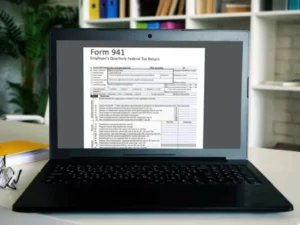Most entrepreneurs are willing to pay their statutory revenue obligations fairly, but no one desires to spend more than they should. Comprehending all the standards that decrease taxable earnings let entrepreneurs cut costs. One notable exemption, the qualified business income deduction (QBID), dramatically eases the fee burden for LLCs and other entrepreneurs. Let’s discuss who can count on such incentives in more detail and how to identify subtraction.
Legislative basis of the QBID
The Tax Cuts Law, signed in 2017 and enacted in 2018, implements the concept of a qualified business income deduction, ensuring excellent economic advantages for different entrepreneurs. Adhering to the directives placed in chapter 199A of the country’s Tax Code, self-employed people are entitled to subtract up to 20% from their dues records.
The specialists decided to implement such a subtraction to balance the C corp tax rate cut according to the 2017 legal documents from 35 to 21%, but preferences cannot last forever. If Congress does not continue the documentation period, it will end in 2026.
Some words about QBI
In a broad sense, QBI, or qualified business income, is the net profit of your firm. Many base revenue adjustments define the ultimate earning of an enterprise. When figuring a parameter, you should not regard the next points:
- Compensations are paid to S corp owners and partnership payments.
- Profit from wages (W2), besides full-time specialists.
- Capital gains from investing activities, e.g., dividends.
- Interest revenue that is not estimated as business interest. In other words, you can consider accruals on outstanding receivables but not consider interest on a bank account.
- Income received in other countries.
- Annuity fees.
- Business transfers that were not used before 2018.
Only business earnings, not losses, may be utilized in the Section 199A deduction. If the organization loses money, the proprietor can employ the lesion to diminish the burden of the charge in the subsequent period.
Who has a chance to get QBID
Qualified business income deduction lets possessors of different businesses save capital significantly by decreasing the dues base; however, this measure only applies to individual business structures. To obtain tax privileges, you need to complete several steps:
- You must launch a sole tradership, partnership, or S corp.
- You should compute the size of net revenue to understand which indicators match the requirements and which violate them.
- It would assist if you computed your taxable income from different sources within a year.
Only pass-through organizations can count on such a subtraction. These are facilities where commercial proceeds are taxed on entrepreneurs’ individual revenue fee returns. The key classes of objects create pass-through profit:
- Individual entrepreneurs, most often independent contractors.
- Partnership participants: several people who collaborate in biz according to the agreement.
- S corp stakeholders: individuals with interests in an S corps if they report corporate profits or losses on dues filings.
- Participants of an LLC who pay dues as sole traderships or S corps.
- Beneficiaries of trusts or immovables.
After studying the checklist of entrepreneurs who may count on pass-through subtraction, you may be surprised, who cannot employ such a function? The answer is simple: proprietors of C corps who deal with corporate income dues.
Some restrictions to receiving a subtraction
Suppose your taxable revenue surpasses the authorized body’s threshold, or the funds are derived from specific transactions. You may only obtain a share of the subtraction in such a context. Under particular conditions, you may lose the right to gain these benefits. Let’s consider what restrictions apply to the sum you take away.
Lower threshold QBI
The floor is the parameter you must not reach to receive the 20% subtraction. Such a figure changes annually, facing the level of inflation. In 2023, these indicators are:
- $182,100 if we speak about a single filer,
- $364,200 for a joint filer.
After reaching these values, your benefits will decrease; rephrasing it will give you a partial decrease in the dues burden. However, you will not yet achieve the strict confines, which rely on the sum you pay staff as your next earning cap.
Higher QBI threshold
Restrictions related to W-2 wages and qualified depreciable equipment in several stages after taxable revenue reaches the next values in 2023:
- $232,100 if you’re alone,
- $464,200 when you are married.
Once you achieve these criteria, your subtraction will be restricted to the larger of parameters:
- 50% of the remuneration the organization pays,
- 25% of salaries and 2.5% of qualified depreciable property, e.g., machines, buildings, etc.
The latter constraint benefits capital-intensive firms with significant investments in fixed resources, such as manufacturers and contractors.
Some commercial groups, called specified service trade or business, cannot demand subtraction after achieving the proceeds ceiling. SSTB comprises organizations that offer favors in medicare, legal, bookkeeping, sports, consulting, arts, etc.
How to demand a QBID from tax documentation
You may employ several forms to file a subtraction, depending on the sum of taxable profit.
Utilizing the simplistic Form 8995 saves a lot of time on paperwork. It is a simple document that contains one page with 17 cells. You may prefer this cutback option if your taxable earning in 2023 is smaller than $182,100 if we speak about unmarried citizens and $364,200 if you are married filing jointly. Another essential condition is that you must be someone other than the patron of an agricultural or horticultural association.
Extended document 8995-A contains four chapters and four complementary tables, allowing you to count the QBI and final recoupment accurately. Such a document is employed if your revenue e surpasses the thresholds or you manage an association.
How to compute the QBID
You are correct if you suppose the determination of tax credits sounds confusing. QBID guarantees considerable savings for companies that match the criteria of this incentive. However, as we already understood above, defining who can receive a pass-through subtraction and the mechanism to compute the benefit volume takes work. The optimal path to avoid errors is to perform all actions gradually, slowly, but indeed.
- Defining if your company is in the service industry is critical at the initial stage. You may seek an economic specialist’s assistance to study which commercial objects are classified as SSTB.
- Next, you should identify the profit upon which revenue taxes are payable. If the ultimate indicator is smaller than $182,100 when we speak about lonely persons and $364,200 if you file jointly, then regardless of industry, you can gain the whole QBID.
- If, after consulting with a specialist, you identify your enterprise is SSTB, and your annual earnings exceed $232,100 if you are lonely and $464,200 for couples, you should stop at this stage. You gain too much to request additional tax credits.
- If your organization is not SSTB and the receipts range from $182,100 to $232,100 for lonely individuals ($364,200 to $464,200 if filing jointly), you have a right to request to gain a whole subtraction.
- Suppose the enterprise is classified as the SSTB, and the profit upon which charges are payable ranges from $182,100 to $232,100 for lonely and $364,200 to $464,200 in case of couples. In such a context, you may identify 20% of your qualifying revenue and employ the income limit discussed above: 50% of payroll or 25% of aggregated staff salaries and 2.5% of resources. Now it remains only to collate estimations with 20% of the previously computed revenue and take away a smaller sum.
There is advanced software that instantly figures out the volume of the subtraction. All that is demanded of the charge payer is to compile the requested insights. The worksheets and instructions which inform most entrepreneurs about the chapter 199A deduction computing norms can be found on IRS paper 1040. Studying the IRS 535 documentation in detail makes sense if your proceeds surpass the restrictions.
Final words
Once you’ve determined your subtraction dimensions and filled out the appropriate pattern, remember to supplement it to your tax records when transferring documentation to the authorized body.
Computing pass-through subtraction can be tricky, even if the enterprise’s proceeds are elementary, let alone complicated manipulations. The IRS platform has answers to common issues created to assist entrepreneurs in understanding all the peculiarities of QBID.
If you want to obtain plain interpretations of complicated themes, please, communicate with a tax advisor. Experts will find all the legitimate dues subtractions for your organization and assist you in correctly computing the size of the decrease in the entire volume of assets.


















